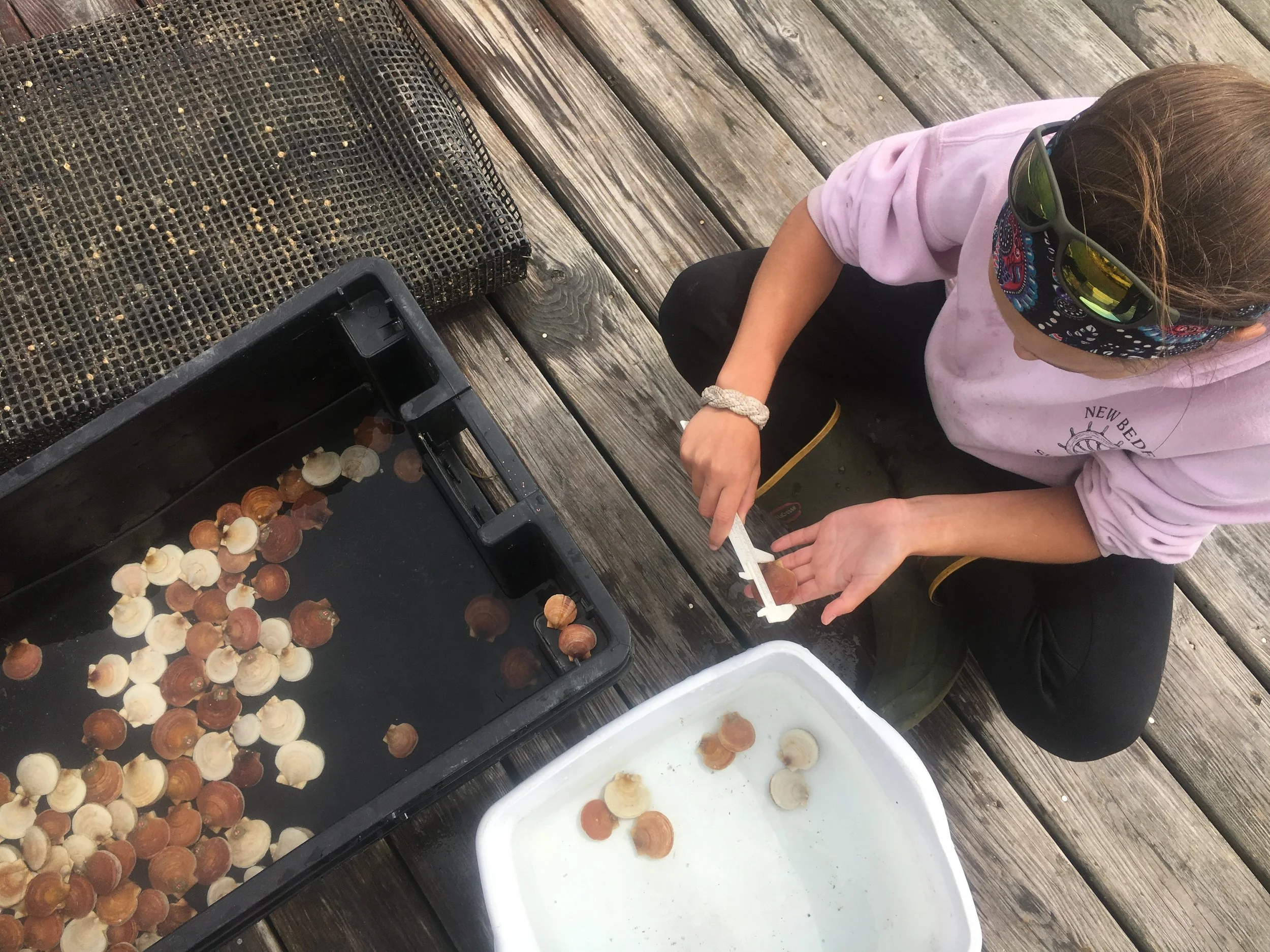Guest blog post by Research Technician Bailey Moritz
Make way for the next cohort of little bivalves!
What went in last fall as the size of my fingertip now fills the palm of my hand. With an average growth rate of 0.07mm per day, our baby scallops spent the past year slowly filling up the bottom cages they were placed in. The added size means, just like for my brother and I growing up, that more personal space is needed. We have been keeping our density around 30% and the scallops are now spread throughout 4 bottom cages and 2 lantern nets. We even had a student from Georgetown join our research team for the day and help us with the time-consuming task of taking monthly growth measurements and transferring them to new, more spacious cages. The help was so appreciated! Everyone should come out and take a look for themselves! They seem to be at their peak teenage phase and very active. There is nothing like the joy on someone’s face as they watch a scallop swim for the first time or hold it in their hand while it utilizes its powerful adductor muscle to clap rapidly.
Our second year class keeps on growin'!
Our charismatic tiny-fauna will undergo monthly cleanings of the mesh and cage structures, as algae and barnacles grow prolifically during the warmer months. We are really starting to feel like farmers! Especially taking into consideration all the new spat we’ve collected this year, our sea farm and the gear required to make it operational are growing in step with the scallops. Our goal is to ear hang them in the fall once they’ve grown a little larger! Stay tuned.
Tracking the growth rates of tagged scallops
This weekend even marked an exciting field trip for a lucky handful of little scallops. Hurricane Island hosted a booth at the Chebeague Aquaculture Festival, giving visitors a chance to look a farmed scallop in the eyes and learn about our goals of research and education through on-island aquaculture. We were joined by an excellent array of speakers, growers, cooks, entrepreneurs, and enthusiastic members of the public! And while those coast-traversing scallops are safely back in their cages now, I think they may miss the taste of warm, growth-conducive water they were briefly given.




